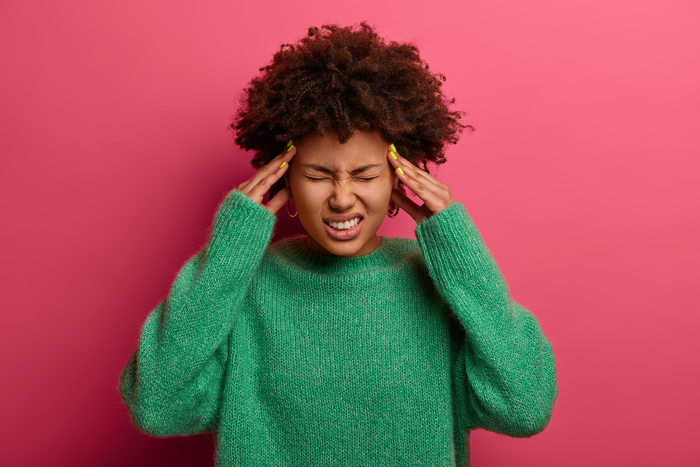What Is a Panic Attack?
A panic attack is a sudden episode of intense fear or discomfort that usually reaches a peak within minutes, according to the Mayo Clinic. They note that panic attacks can be an overwhelming experience, and the symptoms often mimic those of a heart attack or other serious medical conditions.
During a panic attack, individuals may experience a rapid heart rate, sweating, trembling, shortness of breath, chest pain, nausea, and a feeling of being out of control, according to the Mayo Clinic. They also note that these physical and emotional symptoms can be extremely distressing and can lead to a fear of future attacks, which may contribute to the development of panic disorder.
Panic attacks can occur unexpectedly, without an obvious trigger, or they can be associated with specific situations or phobias, according to the Mayo Clinic. The exact cause of panic attacks is not fully understood, but they are believed to result from a combination of genetic, biological, and environmental factors. The Mayo Clinic also notes that experiencing a panic attack does not necessarily mean that an individual has a panic disorder. However, recurrent, unexpected panic attacks accompanied by persistent worry about future attacks or changes in behavior as a result of the attacks may indicate the presence of panic disorder. Understanding the nature of panic attacks and their potential impact is crucial in seeking appropriate help and treatment, according to the Mayo Clinic.
What Are the Symptoms of a Panic Attack?
Panic attacks are characterized by a variety of symptoms that can affect both the mind and body, according to the Mayo Clinic. They explain that these symptoms typically come on quickly and can be severe, creating a sense of acute fear and discomfort. While the intensity of symptoms can vary from person to person, they often peak within minutes and can create a feeling of being out of control, according to the Mayo Clinic. Recognizing these symptoms can help individuals seek appropriate support and treatment. Below is a list of common symptoms that people may experience during a panic attack, according to the Mayo Clinic:
-
Heightened vigilance for danger and physical symptoms
-
Anxious and irrational thinking
-
A strong feeling of dread, danger, or foreboding
-
Fear of going mad, losing control, or dying
-
Feeling lightheaded and dizzy
-
Tingling and chills, particularly in the arms and hands
-
Trembling or shaking, sweating
-
Hot flushes
-
Accelerated heart rate
-
A feeling of constriction in the chest
-
Breathing difficulties, including shortness of breath
-
Nausea or abdominal distress
-
Tense muscles
-
Dry mouth
-
Feelings of unreality and detachment from the environment
It is important to note that not everyone will experience all of these symptoms, and some individuals may have symptoms that are not listed here, according to the Mayo Clinic. If you or someone you know is experiencing these symptoms, it is important to seek professional medical advice to rule out other possible causes and to get appropriate care.
What Causes Panic Attack?
The exact causes of panic attacks are not entirely understood, but they are thought to be the result of a complex interplay of biological, environmental, and psychological factors, according to the Mayo Clinic. These attacks can be frightening and confusing, leaving individuals seeking answers for why they occur. Understanding the potential causes of panic attacks is a key step in managing this condition, as it can provide insight into treatment options and strategies for prevention.
Psychological factors, including a history of trauma or significant stress, can increase the risk of experiencing panic attacks, according to the Mayo Clinic. Individuals with a predisposition to anxiety or those with certain temperaments may be more susceptible, they note. Moreover, significant life transitions, such as graduating from college, starting a new job, or becoming a parent, can also be triggers.
The Mayo Clinic also explains that panic attacks can sometimes begin after a person has experienced a stressful event, although they may also occur without any obvious cause or trigger. Understanding these causes can empower individuals to seek appropriate treatments, which may include therapy, medication, lifestyle changes, or a combination of these approaches.
When Should You Visit Your Doctor?
It is important to visit your doctor for panic attacks if you are experiencing frequent or severe episodes, according to the NIH. They note that seeking help is crucial because untreated panic attacks can lead to various health problems, including an increased risk of developing other anxiety disorders, depression, and substance abuse. Additionally, panic attacks can have a significant impact on your overall quality of life and functioning. The NIH explains that seeking treatment can help you learn coping strategies, receive medication if necessary, and address any underlying issues contributing to panic attacks. Early intervention can prevent the escalation of symptoms and improve your overall well-being.
Panic Attack Treatment Options
Panic attacks can be intensely frightening experiences, but there are effective treatments available that can help manage and reduce their frequency and severity, according to the Mayo Clinic and the NIH. They both explain that treatment plans for panic attacks may involve various strategies tailored to the individual's needs. These options range from medical interventions to lifestyle changes and therapeutic techniques. The goal is to provide relief from symptoms, equip individuals with the skills to prevent future attacks and improve their overall quality of life. Below are some of the treatment options for panic attacks, according to the Mayo Clinic and the NIH:
-
Medications: Antidepressants and anti-anxiety drugs can help regulate brain chemistry and prevent panic attacks.
-
Psychotherapy, including cognitive-behavioral therapy (CBT): This therapy helps identify and change patterns of thinking that trigger panic attacks.
-
Biofeedback therapy: This uses electronic monitoring to teach patients to control certain bodily functions that may contribute to panic symptoms.
-
Stress management techniques: Learning how to manage stress can help reduce the likelihood of panic attacks.
-
Proper breathing techniques: Controlled breathing can help alleviate the hyperventilation that often accompanies panic attacks.
-
Relaxation techniques: Activities such as meditation, yoga, or progressive muscle relaxation can help calm the mind and body.
-
Learning problem-solving skills: Developing the ability to effectively confront and solve issues can reduce anxiety.
-
Lifestyle adjustments: Attention to diet, exercise, and sleep can have a significant impact on the frequency and intensity of panic attacks.
For a medical emergency, such as severe panic attacks, dial 911 or visit your closest emergency room or urgent care immediately.
Image by wayhomestudio on Freepik
FAQs
What is a panic attack?
A panic attack is a sudden episode of intense fear or discomfort, often peaking within minutes. It can mimic serious medical conditions.
What are some symptoms of a panic attack?
Symptoms can include a rapid heart rate, shortness of breath, chest pain, nausea, and a sense of being out of control or impending doom.
What causes panic attacks?
The exact cause is not fully understood, but panic attacks are believed to result from a combination of genetic, biological, and environmental factors.
Can panic attacks be treated?
Yes, there are various effective treatments available, including medications, therapy, stress management techniques, and lifestyle adjustments.
When should I seek medical help for panic attacks?
You should seek help if you are experiencing frequent or severe episodes, as untreated panic attacks can lead to various health problems and impact your overall quality of life.



